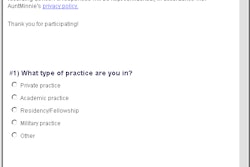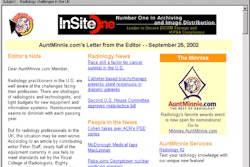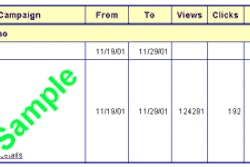Types of online banner advertisments. An online advertisement can be a graphic image, a snippet of HTML, or a file created with an interactive technology such as Java, Shockwave or Flash.
- Static Banners - Static banners are fixed images on a Web site. Visitors to a site can click on the banner and be directed to a designated page on another Web site. Ease of production and its universal acceptance are the primary advantages of this type of online advertisement.
- Animated Banners contain moving elements: changing colors, flashing lights, etc. The multiple frames of animated banners allow for more information to be communicated. Animated banners often record higher click-through rates than static banners.
The Function of Banner Ads
Some marketing professionals see the banner advertisement's singular function as that of enticing Web surfers to click through to their Web site. Such a narrow view of the function of the banner ad results in missed opportunities for building brand awareness and harnessing the power of the Internet to develop one-to-one relationships with their target market.
A company can create a enticing banner ad offering free European vacations that would generate a phenomenal click-through rate. But, unless the banner attracts the appropriate target audience, the high number of people clicking on the ad for the trip will fail to generate much new business.
It is not enough to create a banner advertisement that entices large numbers of random people want to click through -- you need a banner that attracts the appropriate target audience to want to click through.
Building Brand Awareness
Online advertisements serve another important purpose -- building brand awareness. While the person surfing the Web may not click on your advertisement, if he/she sees it enough times your company name will come to mind later. Click through rates are not the strongest measurement of an ads total impact. A report commissioned by the Interactive Advertising Bureau (IAB) showed that consumers’ immediate brand recognition was increased by exposure to banner ads by a factor of 2-7 percent.
According to a Dynamic Logic study, in online campaigns, significant awareness accumulates at the 4 or more exposure level. Users may not click on an ad immediately as doing so would distract them from the information they are trying to acquire from the site. Instead, they may remember the ad and its message, and later make a visit to the advertiser’s site when they need the product or service being advertised. Click through rates do not successfully measure changes in consumers attitudes or longer-term behaviors.
Increasing Click-Through Rates
One of the best ways to maximize click-throughs is to create a variety of banners, and change them periodically throughout the course of a campaign. With the ability to track performance on the Web in real time, continually testing and analyzing the results can help marketers find the most effective type of banner and messaging to meet their sales goals and objectives.
Some Hints for Creating Responsive Banner Ads
Change Your ad Frequently
According to research performed by Double Click and I/Pro, users are most likely to respond the first one to two times they see a banner ad. Response drops significantly after the second exposure. It is a good idea to change your creative frequently on a highly focused site such as AuntMinnie.com, as many of our members visit on a daily basis.
Include a Call to Action
As is the case with traditional advertisements, you should always include a call to action within the ad. Why should users click on the banner? Do they win a prize? Receive a discount? Without a reason to click, there is no incentive for a user to leave a Web site. The incentive should be relevant to the site on which you are advertising. "Free" works well, but you won't always get the most qualified audience.
Add the Words "click-here" to the Advertisements
Online advertisements with the words "click-here" consistently outperform those without. This may also explain why some advertisements have a better response rate when there is hyper-linked text underneath the advertisement.
Create a Sense of Urgency
Give users a reason to "click now" before the special ends, before the price changes, before the version number on your software changes or new product is released. A sense of urgency may help a person to decide to click on your advertisement now rather than wait.
Go Easy on the Text
Too much text in an online ad is distracting and will not catch the attention of the user. You will entice more users to look at the banner ad if you keep the text short and teh design simple.
Pose a Question
According to some online advertising studies,posing a question within an ad can raise click-through rates by 16%.
Incorporate Animation
Animation can help make an advertisement get noticed amongst the clutter. According to a study by ZD Net, animation improved click-through rates 15%-40% over static Web advertisements.
Effective use of Color
Use colors that stand out. The colors you choose should contrast those used on the site you are placing your advertisement.
Rotate Banners
Using multiple banners throughout a campaign almost always increases the response rate.
Use Banners as Part of the "Mix"
Online banner advertisements are an excellent way to communicate online, but they are not the only way. Take advantage of sponsorship opportunities to help position your company as a market leader and build even stronger brand loyalty.
More Facts About Online Banner Advertisements
A recent Engage AdKnowledge Online Advertising Report indicates that people who recently saw an online advertisement have a dramatically higher propensity to purchase or register at the advertiser's site. This result indicates that people are viewing ads even without clicking drives conversions. "This study shows there is measurable and concrete value to an impression without a click," said David Zinman, Senior Vice President, Engage. "That means marketers need to pay attention to the 99% of people that do not click. We think that realization raises the value of the Internet as an advertising medium."
"Online advertising is no longer just about click-throughs. Although industry financial analysts have relied on click-though rates to gauge the effectiveness of online advertising campaigns, the market has finally realized that click-through is not an appropriate metric for brand-oriented ads," said Charlie Buchwalter, Vice President of Media Research for AdRelevance. Leading advertisers have already drifted away from the click-through mentality of pure direct-response marketing.
AdRelevance data shows that a full 63% of the ads are brand-oriented. With streaming and rich media coming more into play, the Internet will increasingly function more like a traditional branding medium, making advertising on the Web more appealing to all, especially traditional companies who have more offline brand-management strategies."



















